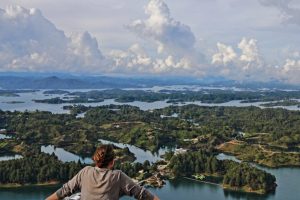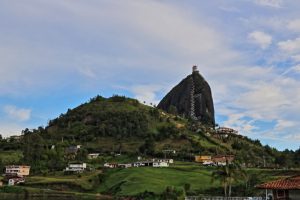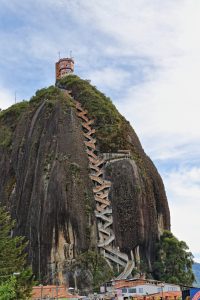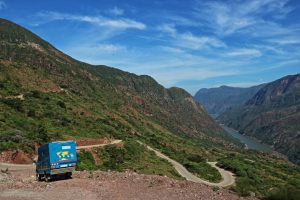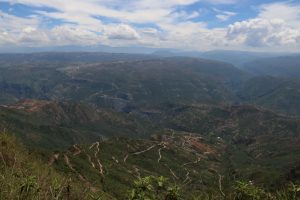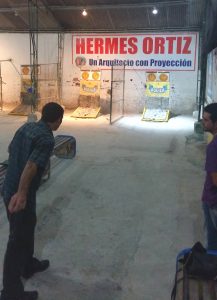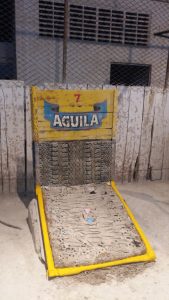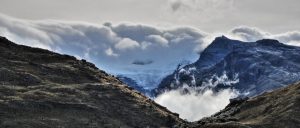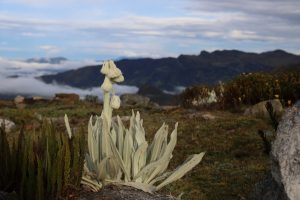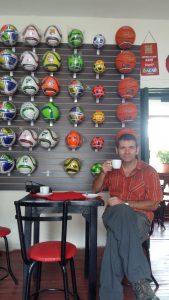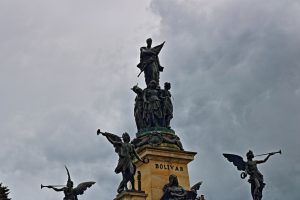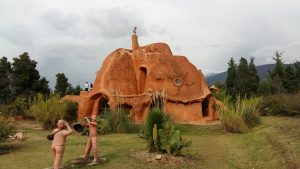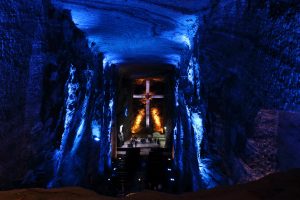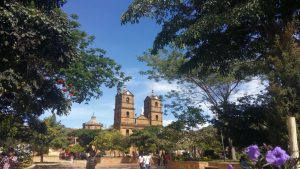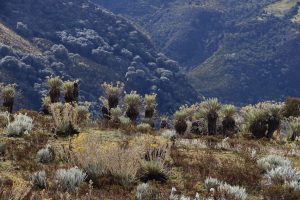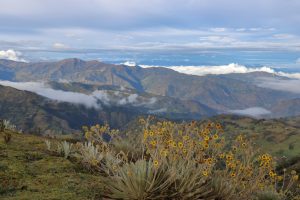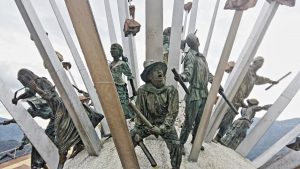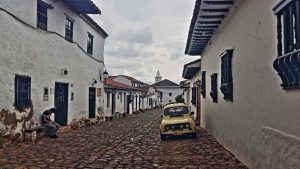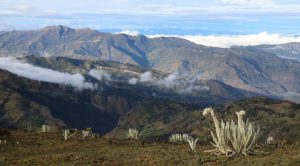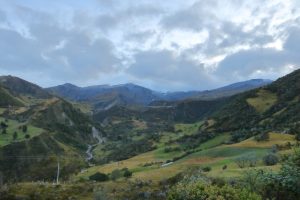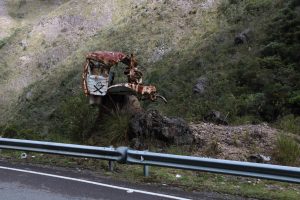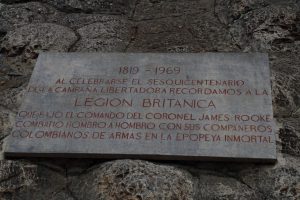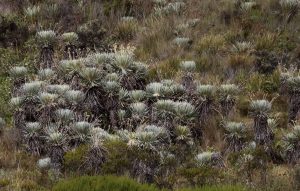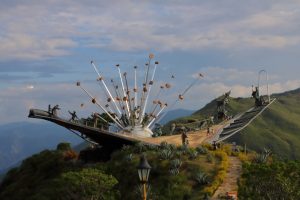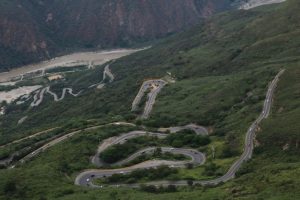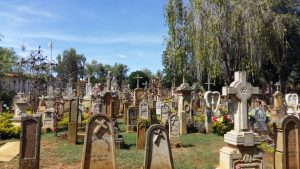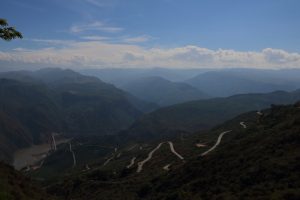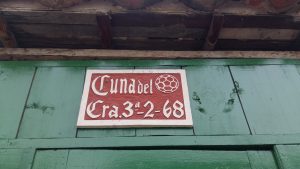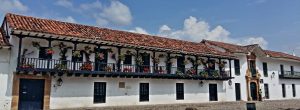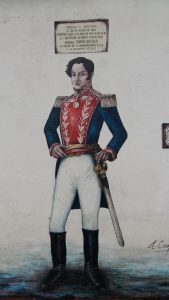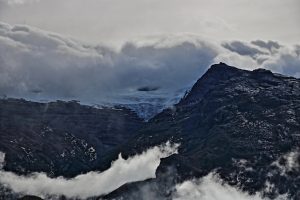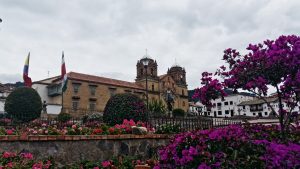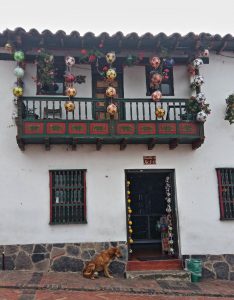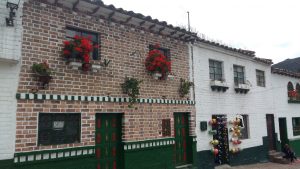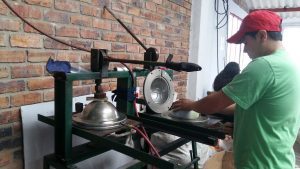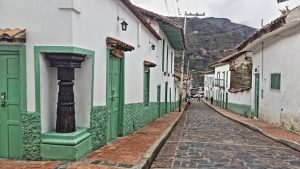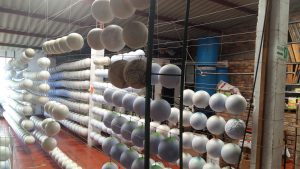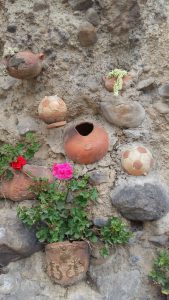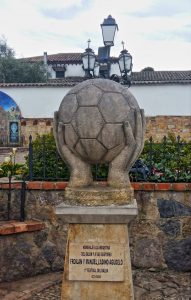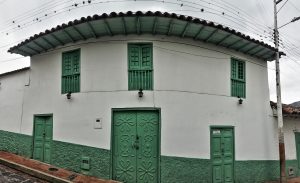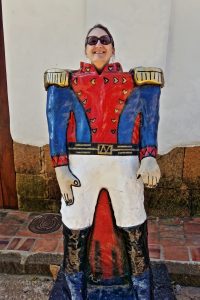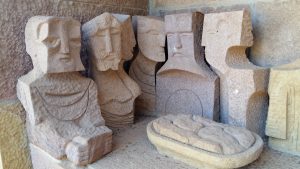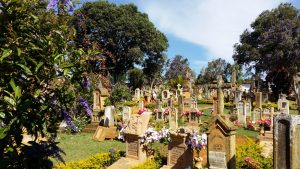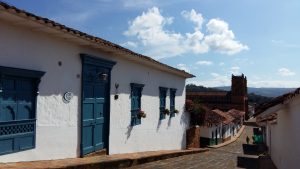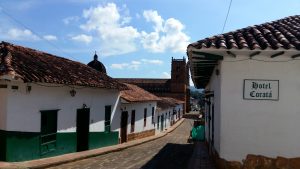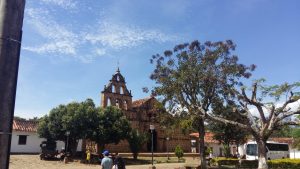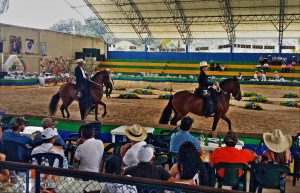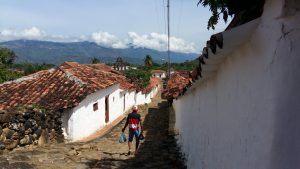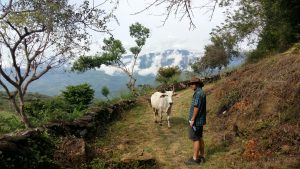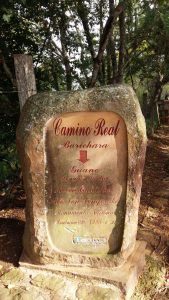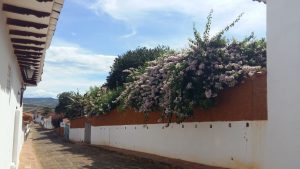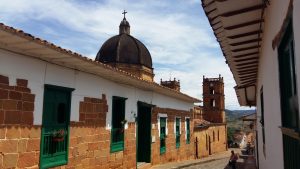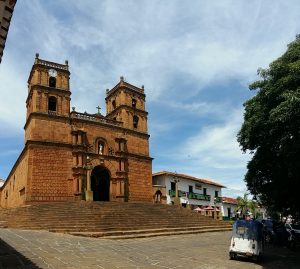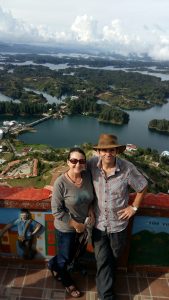Help! We need an adequate superlative for Colombia. Bit unimaginative to say that it’s just the loveliest country… but trust me… it really is. After the friendliest welcome, countless scenic small towns, the finest coffee, the ancient history and the fascinating former drug-lands… we’re heading east and south a bit, on a very roundabout route through central Colombia to Bogotá.
Guatapé
First stop, the reservoir lakeside town of Guatapé and the giant volcanic plug: Peñol. There’s a lot of steps to climb the Peñol – 740 of them to be precise – but absolutely worth it for the views.
Fun though the climb and the views are, we’ve arrived in Guatapé on a Friday afternoon and haven’t exactly lucked-in with our timing. Turns out, it’s a holiday weekend. A large stage in the plaza is pushing out deafeningly thumping vibes; youngsters are jumping to the beat with an enthusiastic fist-pump action into the air. We’re told the partying is set to continue over the weekend. Fabulous… if you like that kind of thing! Call us old party-poopers, but we’re a bit past that kind of ‘do’. Next morning we move on pronto into the hills.
Chance Encounter
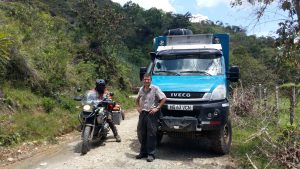 Heading north from Guatapé we skip the highways and take some little-used mountain tracks. No other vehicles, just the odd farmer waving from the fields (I think we may have mentioned before how friendly the Colombian people are 😊). Suddenly, just as we’re scouting for a cuppa-stop, an overlanding motor-biker with Canadian flag-stickers approaches. Bet he’d like a cup of English tea! Kevin is a lovely young guy heading south solo and is great company for an impromptu tea-party at the side of a track… somewhere in rural Colombia.
Heading north from Guatapé we skip the highways and take some little-used mountain tracks. No other vehicles, just the odd farmer waving from the fields (I think we may have mentioned before how friendly the Colombian people are 😊). Suddenly, just as we’re scouting for a cuppa-stop, an overlanding motor-biker with Canadian flag-stickers approaches. Bet he’d like a cup of English tea! Kevin is a lovely young guy heading south solo and is great company for an impromptu tea-party at the side of a track… somewhere in rural Colombia.
Horse Dancing
Soon after our farewell to Kevin, we come across a village arena and many horses. A small crowd is gathering, there’s traditional music and an enticing smell of roasting meat wafting over… this looks worth a stop! This local event is ably described by Marcus as a ‘horse-dancing competition’ 😊. We buy some tasty meat off the barbie, pay our 5,000$ (sounds a lot huh? It’s the grand sum of £1 each!) and take our seats. Inside, the event isn’t quite so well attended as the partying outside, but let’s see…
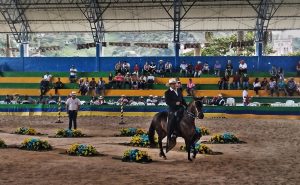 The sand-pit arena is decorated with flowers and features a large X-shaped board runway. Competitors emerge to guide their steeds in turn across the X-shape floor-boards, allowing the clippety-clop sound of the horses’ hooves to be amplified across the arena. It seems they’re being judged on their tight control of the horse and the rhythmic-sequence sounds made by the hooves trotting across the boards.
The sand-pit arena is decorated with flowers and features a large X-shaped board runway. Competitors emerge to guide their steeds in turn across the X-shape floor-boards, allowing the clippety-clop sound of the horses’ hooves to be amplified across the arena. It seems they’re being judged on their tight control of the horse and the rhythmic-sequence sounds made by the hooves trotting across the boards.
As may be glaringly apparent from this account, neither of us have any knowledge whatsoever of the horsey-world. We love finding these random events and particularly the atmosphere and excitement amongst the locals, but at the end of the day, there are only so many times one can feign interest in a horse dancing across some wooden boards. There’s no variation in the competition skills and colourful rosettes seem to be dished-out at random, accompanied by wild applause and whistling from the few spectators who have dragged themselves into the arena from the partying outside. It’s fun, but only for a while!
An Illegal Entry
After the horse-dancing and a very hot, air-less night in the lowest altitude valley we’ve been in for several months, we take a winding 50km road up to higher altitude and cooler temperatures. The village of Zapatoca is shown on most maps at the end of a dead-end road, but we spot on one map, the dotted line of an S-bending track descending into the next valley. Hmmmm… we wonder… will this save us a 50 km back-track? There’s only one way to find out!
It’s steep, rough, narrow, partly overgrown, and requires considerable teeth clenching. 20 km of hairpin bends takes us almost 3 hours, but we manage the 2,000m descent. Next challenge: crossing the river rapids at the bottom. There’s no public means to cross, however there is a private ferry for the nearby mine. We just have to negotiate a price with the ferryman and we’re across. Marvellous.
On the other side of the river is the Mesa Santos Reserve (including the Parque Chicamocha cable-car – not highly recommended, the Parque Arvi cable car in Medellin is better and a tenth of the price). For some odd reason not entirely clear to us, at the exit of this reserve there is fee for both the entry and the exit. The lady wants to know when we entered. We explain that we entered down the track from Zapatoca and over the river with the mining ferry, but she doesn’t believe us.
First, she says it wouldn’t be possible to drive that track in our truck. Secondly, even if we had done so, it would be an illegal entry into the reserve. Obviously it’s all utter tosh, but she’s adamant we have to pay a two-way rather than a one-way use of the park road. Oh well… not really worth arguing over a mere 12,000$ (£3). Soon we’re back on the main 45A super-highway. Onwards Ho!
An Explosive Night
In San Gil we have an go at Colombia’s national sport: Tejo – a heady combination of gunpowder and beer. Here’s how it works: each player holds a block of cast iron and stands some 10ish metres away from a small pit of soft clay. In the centre of the clay-pit are placed two triangular ‘target’ packets of gunpowder. The players throw their block of cast iron into the clay-pit, aiming to land directly onto the target with a ‘bang’! Let me tell you… hitting that gunpowder-target is a lot harder than it looks! But if you do get good (or lucky), the resulting detonation sends a shockingly loud crack-bang ringing through your ears and around the Tejo court. When, as happens often in the rounds of our game, nobody gets a ‘bang’, points are awarded for whoever lands their lead-block closest to the centre of the clay-pit.
Another key aspect of the game is the consumption of generous quantities of beer. A crate of the local Poker beer is handed out to each team and it’s frowned upon to attempt to play without partaking of the brew. We are rather more successful with the beer-consumption part of the evening than we are with hitting the gunpowder, but it was all great fun. They know how to have laugh these Colombians!
Friends to celebrate
Our route for this stage of Colombia is a very roundabout track from Medellin to Bogota; there’s so much to see and do in this part of Colombia. There’s never-ending supply of super-cutesie white-washed villages like Barichara and Villa de Leyva, and super-cutesie colourful villages like Cocuy and Monguí. In Villa de Leyva we’re chuffed to bump into Swiss travellers Marc and Barbara who we previously met last year in Argentina and again earlier this year in Peru. It’s so nice to meet familiar faces on the road; with them and new friends John, Mandi, Matty and Ingrid, we have a great time celebrating our 15th and John and Mandi’s 20th wedding anniversary.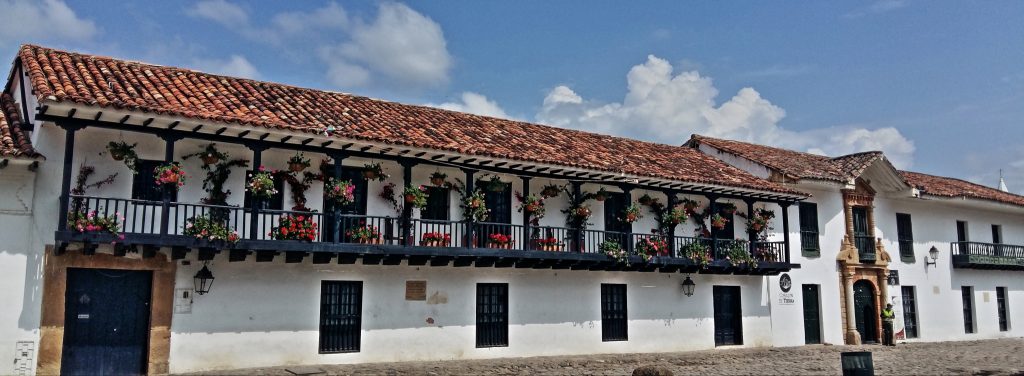
Skipping to Bogotá
Here we could drag on a bit and describe in dull detail all the many things to see and do in this area, but I think we’ll skip with some haste through a few of the other highlights we saw:
- the snow and glaciers of Sierra Nevda del Cocuy. Yes, Colombia has glaciers! Who knew???
- the rare and endangered frailejón flowers particular to certain altitudes of the far northern Andes.
- one of the world’s highest beaches at 3,000m on Lake Tota. Pretty, but bit too cold for a swim!
- Monguí, the tiny village industry that supplies over 300,000 footballs per year to the rest of Latin America.
- a quirky and extraordinary terracotta house self-built by a local tradesman in Villa de Leyva.
- another Simon Bolívar. You’re never far from a Bolívar around here, but Puente Boyacá is the site of the decisive battle for the independence of the Colombian nation. The great liberator of South America is immortalised in many ways across the continent, but as you might expect… this one’s a biggie! And there’s a plaque here to commemorate the participation of the British assisting Bolivar’s cause… Who knew???
- a Salt Mine Cathedral. A disused salt mine in the hills north of Bogotá has been converted into a stunning underground cathedral – one of only three in the world. The lighting is a bit kitsch in places but nevertheless, well worth a stop if you’re passing.
- Glaciers in Colombia. Who knew??
- The rare frailejon
- A beach at over 3,000m
- Coffee in football-town
- You’re never far, from a Bolivar
- Quirky terratcotta house
- Salt Mine Cathedral
And finally… without further ado… we’ve made it to our final capital city of the continent… Bogotá. Lots on the agenda here. Watch this space to see how it matches-up to its great rival, Medellin 😊
Link to next blog: Bogota Link to full South America Blog
Central Colombia Photo Gallery
- The rare frailejon
- You’re never far, from a Bolivar
- Salt Mine Cathedral
- Quirky terratcotta house
- A beach at over 3,000m
- Coffee in football-town
- Glaciers in Colombia. Who knew??


